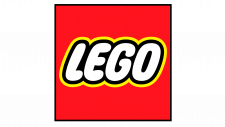Sherwin Williams Logo
Sherwin-Williams is a global leader in the paint and coatings industry. Founded in 1866, this Cleveland-based enterprise currently caters to both individual consumers and businesses with its vast range of products. Dominating markets in North America, it’s expanded its reach globally. Known not just for residential paints, Sherwin-Williams also offers industrial and commercial coatings. As a publicly-traded entity (NYSE: SHW), it’s overseen by a board and shareholders. Their commitment remains steadfast: to enhance the beauty and protection of surfaces with innovative solutions.
Meaning and history
Sherwin-Williams, an iconic name in the paint industry, originated in 1866 when Henry Sherwin invested in Truman Dunham & Company, a paint business. Within a few years, the enterprise was rechristened as Sherwin, Williams & Co.
In the late 1800s, innovation shone with the introduction of ready-mixed paints, a novelty at the time. This put the company ahead in the market. By 1891, the firm’s identity had again evolved to The Sherwin-Williams Company.
The 20th century saw an expansion spree. Acquisitions played a pivotal role in its growth strategy. Notably, the takeover of Martin-Senour Co. in 1917 marked the company’s dominance in North America.
The post-WWII era amplified the need for diversified coatings. Sherwin-Williams responded with products catering to the automotive and aerospace sectors.
Into the 21st century, the company embarked on international expansion and technology infusion. In 2017, they acquired Valspar, further bolstering their market position.
Throughout its history, leadership transitions have been smooth, maintaining continuity in vision. From its modest beginning to its global footprint today, Sherwin-Williams has painted a tale of innovation, resilience, and growth.
1885 – 1905
Henry Sherwin crafted the unique chameleon emblem. He set a vibrant green reptile on an elliptical wooden base surrounded by a dark metallic border. The intricately carved finger slot hinted at an artist’s canvas. The chameleon’s presence was a nod to the versatility of hues, while the painter’s board evoked the essence of artistic invention. Through this design, Sherwin emphasized the harmony of nature and creativity, showcasing the endless possibilities of color transformation and the imagination behind every creation.
1893 – 1905
Back in 1893, an artist by the name of George W. Ford conceived the emblem for Sherwin-Williams, a symbol that would eventually achieve legendary graphic recognition. Initially, it was rendered in a monochromatic palette. Ford’s creative vision portrayed Earth, adorned with longitudinal and latitudinal lines, beneath an oversized paint jar. This vessel, slanting roughly at a 45-degree inclination, released a cascading wave of white paint that embraced the world. Each droplet and splash was meticulously illustrated, showcasing the detail and precision Ford poured into his masterpiece. This early design beautifully captured the essence of paint encompassing the world, hinting at the brand’s global aspirations.
1905 – 1910
In the year 1905, there was a shift towards a more streamlined design. The creatives modified the paint’s appearance to highlight its texture and depth, introducing a subtle shade on the right for added dimension. Moreover, they lightened the Earth’s depiction and infused it with a hue, covering nearly half its expanse. The paint container underwent a size reduction, and prominently, the tag now sported the initials “SW” as a nod to the iconic Sherwin-Williams brand name, emphasizing brevity and brand recognition.
1910 – 1919
By the dawn of 1910, a resonating slogan “COVER THE EARTH” started echoing around the world, establishing itself as Sherwin-Williams’ guiding principle for the ensuing century. Crafted using a hand-rendered typeface without decorative serifs, the characters stood out prominently. Just like the lustrous white paint that the brand epitomized, the inscriptions too were presented in white. Yet, it was the distinct black borders around each letter that gave them their definitive shape, ensuring clarity and making a lasting impression on the viewer’s mind.
1919 – 1926
After a subsequent revamp, the emblem on the paint can transitioned from the “SW” moniker to the “SWP” initials, standing for Sherwin-Williams Paints. Concurrently, cartographic nuances were added to the logo by marking the continents with their names: “AFRICA” to the left and “EUROPA” to the right, thereby suggesting that the water body depicted was indeed the Atlantic Ocean. To ensure these newly added geographic labels were clear and legible, the backdrop of the globe underwent subtle adjustments in its brightness.
1926 – Today
During the 1920s, the emblem underwent a significant simplification. The paint’s color was shifted to a vivid red, which drew comparisons to the hue of blood by many observers. The acronym displayed on the paint can adopted this same striking shade. Meanwhile, the globe’s outlines and mapped continents transitioned to a contrasting blue. Concurrently, the can’s depiction, the expansive ocean, and the renowned tagline “COVER THE EARTH” were rendered in pristine white. Notably, the geographic labels previously present on the map were removed during this redesign.
1974 – 1999
In response to significant backlash, the firm decided to overhaul their emblem, moving away from the contentious portrayal of Earth submerged in paint. To resonate with eco-aware consumers, Sherwin-Williams introduced a logo emphasizing benign textual representation.
The brand’s first name was showcased in a blue hue positioned at the upper section. The subsequent segment of the name was highlighted in white, situated beneath and crafted from the negative area within a blue rectangular frame. The design intriguingly combined both lowercase and uppercase typography. The twin ‘l’s in “Williams” extended into curving lines reminiscent of paintbrush strokes.
1982 – 1999
For a long time, the firm’s patrons had a deep affinity for the iconic logo representing a globe awash in paint. In response, by 1982, the decision was made to integrate this imagery with the typography introduced in 1974. The text, adorned in hues of blue and white, was situated at the base. Dominating the upper portion were the vividly portrayed Earth, engulfed in vibrant paint, and the colossal “cosmic” container. These elements were accentuated with striking white borders and were ensconced within a grand azure rectangular backdrop.
1999 – Today
Approaching the dawn of the 21st century, the esteemed producer of paints and artistry utensils decided to revisit and revamp their emblematic insignia. They reintroduced the design element that had originally made its debut in 1926. The accompanying textual element underwent a streamlining process. Now, the azure inscription “SHERWIN WILLIAMS” was bifurcated into a duo of rows. Consistency was maintained by employing an italicized typeface for both segments of the brand’s moniker. While every character was capitalized, special emphasis was given to the initial “S” and “W” by rendering them in a magnified size.




















